Configuring MFA for Cisco ASA SSL VPN using
RADIUS
This guide provides steps for enabling multi-factor authentication (MFA) using RADIUS for Cisco's Adaptive Security
Appliance (ASA) product using ManageEngine ADSelfService Plus' MFA for VPN feature.
To enable RADIUS-based authentication for VPN providers, the MFA for VPN supports the following authentication
methods in addition to the default username and password-based authentication:
- Push Notification Authentication
- Fingerprint/Face ID Authentication
- ADSelfService Plus TOTP Authentication
- Google Authenticator
- Microsoft Authenticator
- Yubico OTP (hardware key authentication)
The RADIUS-based MFA process for Cisco ASA using ADSelfService Plus

Configuration process
Prerequisite:
Step 1: Configuring MFA in ADSelfService Plus
- Log in to ADSelfService Plus as an admin.
- Go to Configuration → Self-Service→ Multi-Factor Authentication → Authenticators
Setup.
- Configure the authentication methods required.
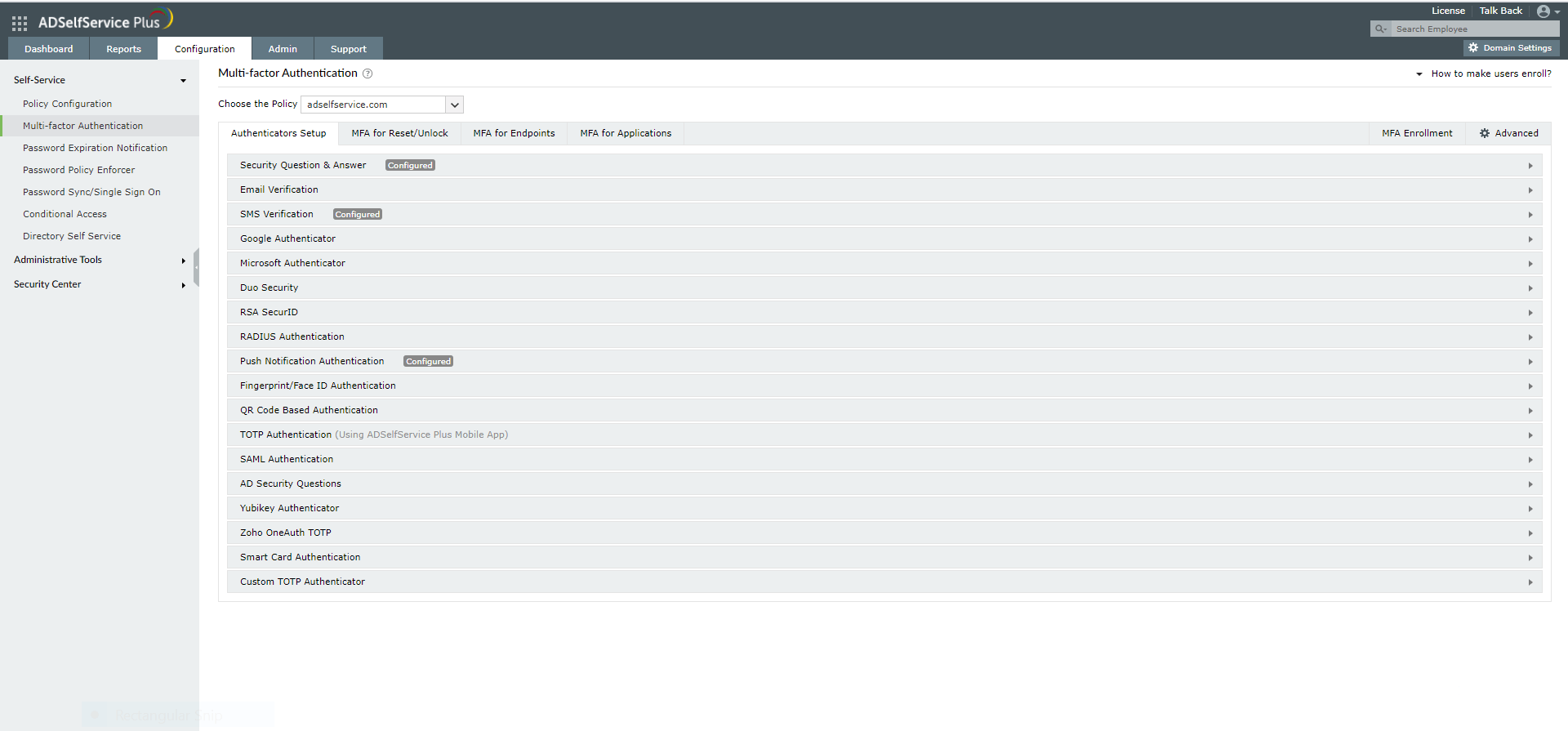
- Go to MFA for Endpoints.
- Select a policy from the Choose the Policy drop-down. This policy will determine the users for
whom MFA for ASA will be enabled. To learn more about creating an organizational unit or a group-based policy, click
here.
- In the MFA for VPN Login section, select the checkbox next to Select the authenticators
required. Choose the number of authentication factors to be enforced. Select the authentication methods
to be used. The authentication methods listed can also be rearranged by dragging and dropping them at the necessary
position.
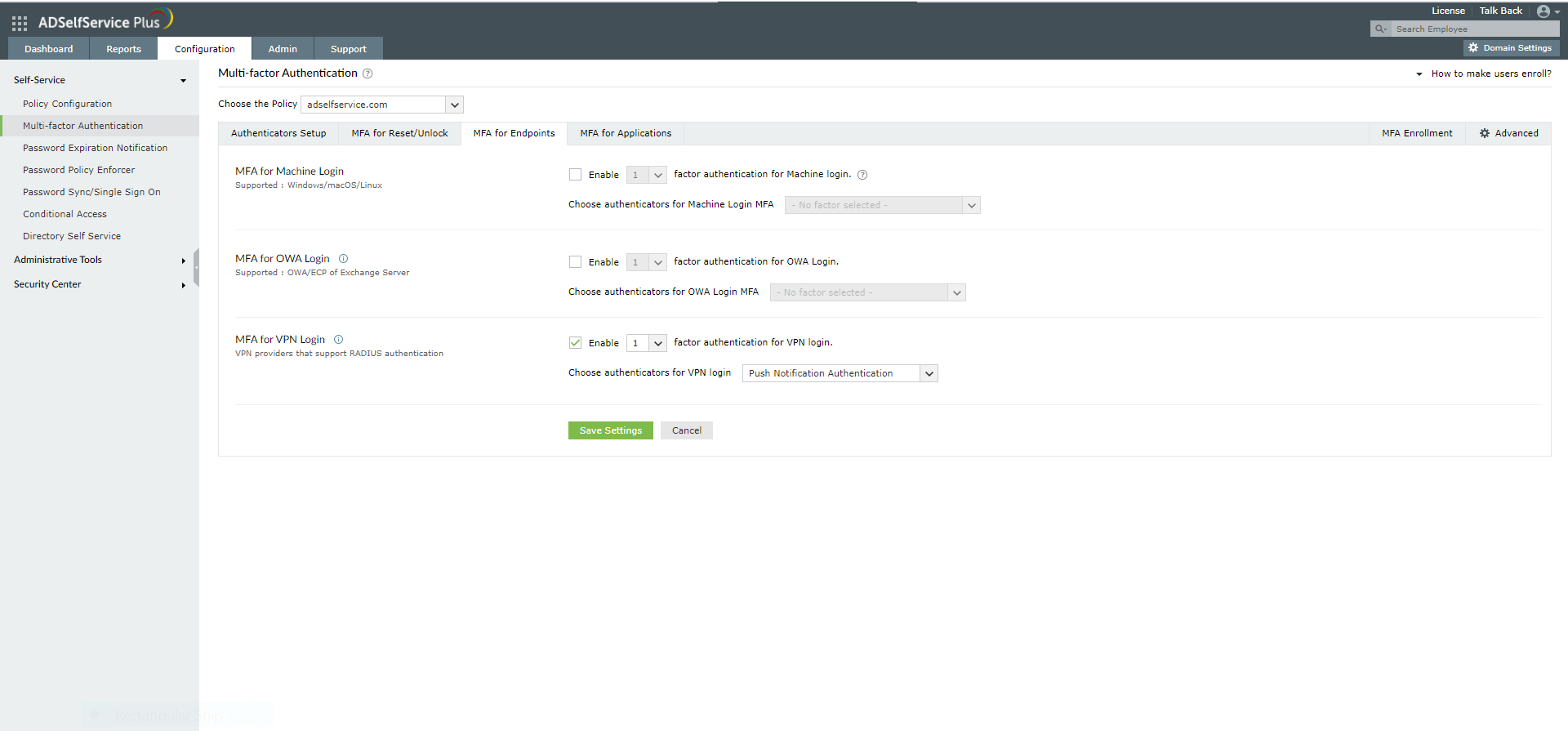
- Click Save Settings.
- Click the help icon next to MFA for VPN.
- Download the NPS extension using the Download link provided in the pop-up that appears.
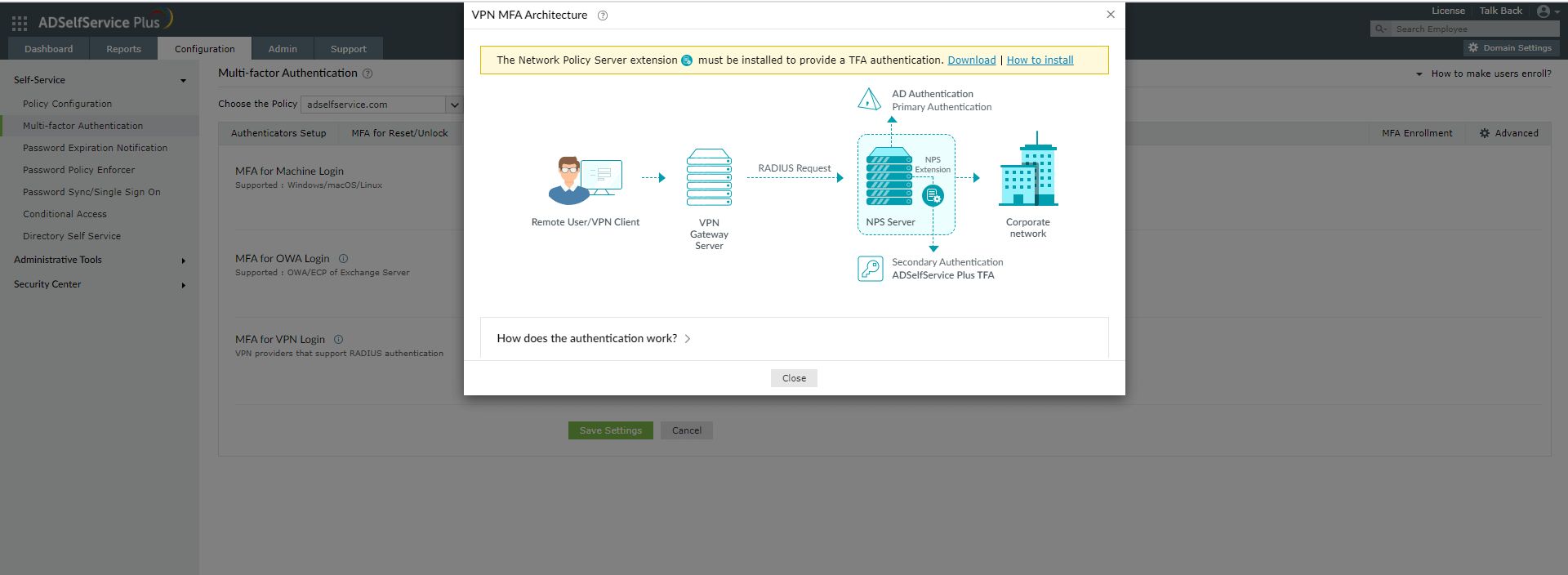
Step 2. Install the NPS Extension
- Copy the extension file (ADSSPNPSExtension.zip) to the Windows server, which you have configured
as the RADIUS server. Extract the ZIP file’s content and save it in a location.
- Open Windows PowerShell (x64) as administrator and navigate to the folder where the extension files content is
located.
- Execute the following command:
PS C:\> .\setupNpsExtension.ps1 Install
Note: If the NPS extension plug-in has to be uninstalled or updated to newer
versions and configuration data, enter Uninstall and Updated respectively instead of Install.
- After installation, you will be prompted to restart the NPS Windows service. Proceed with the restart.
- Configure a RADIUS client in the NPS service for ADSelfService Plus. Set a shared secret during
configuration for future use during configuration of the Cisco server.
Step 3. Configure your Cisco ASA
- Navigate to AAA/Local Users → AAA Server Groups, click Add.
- Provide a name for the AAA Server Group and select RADIUS as the Protocol.
- Click OK to create a new server group.
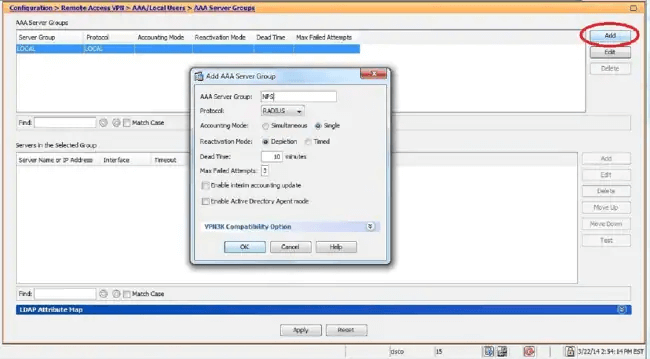
- Select the AAA Server Group just created.
- In the Add AAA Server pop-up that appears, enter the following information:
- Interface name: The ASA interface where the NPS extension can be reached.
- Server Name or IP Address: The hostname or IP address of the NPS server where the NPS
extension is installed.
- Timeout: Set a minimum of 60 seconds.
- Server Authentication Port: 1812
- Server Accounting Port: Not required
- Retry Interval: Set for a minimum of 10 seconds.
- Server Secret Key: Enter the shared secret set during RADIUS client
configuration under step 2 in the NPS server.
- Microsoft CHAPv2 Capable: Leave this checkbox unselected if using challenge-based
authenticators like ADSelfService Plus TOTP Authentication, Google Authenticator, Microsoft Authenticator, and
Yubico OTP (hardware key authentication).
- Click OK, and OK again to save the new server.
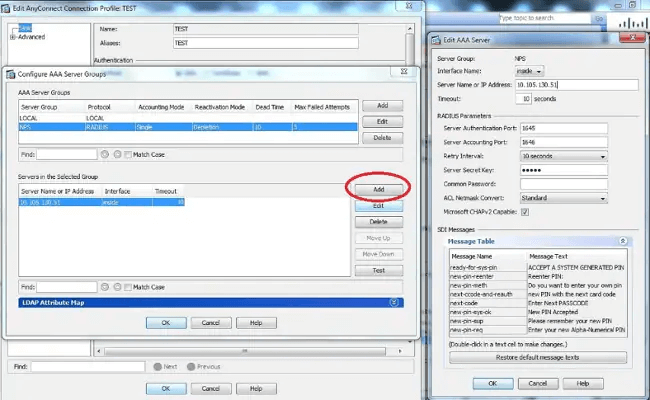
- Go to Network (Client) Access → AnyConnect Connection Profiles.
- Select the connection profile to which you want to add two-factor authentication and click Edit.
- In the Authentication section of the Basic profile settings page, select
the AAA Server Group created previously.
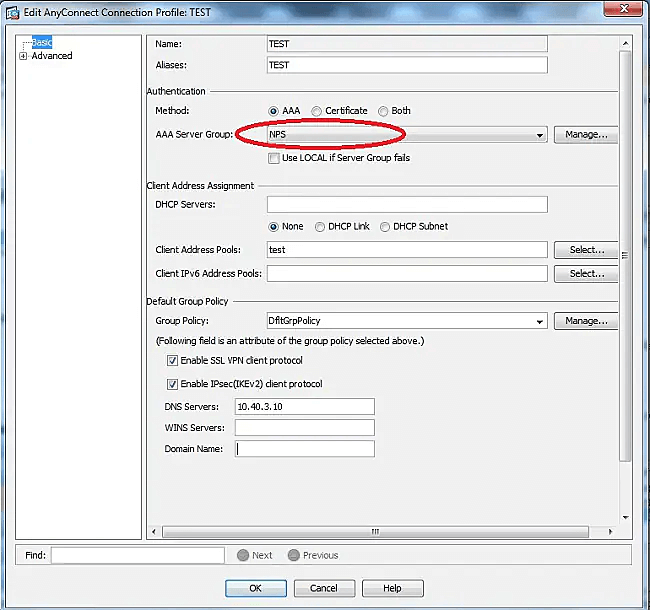
- Go to AnyConnect Connection Profiles. Navigate to Advanced > Secondary
Authentication, and set Server Group to None.
- Go to Network (Client) Access again, and navigate to AnyConnect Client Profile > Edit
> At Preferences (Part 2) and set the Authentication Timeout (seconds) value to
60.
- Uncheck the Use LOCAL if Server Group fails option.
- Click OK, then click Apply.
- Click Save to save all the information in the ASA device memory.
Features of ADSelfService Plus
Highlights
Free Active Directory users from attending lengthy help desk calls by allowing them to self-service their password resets/ account unlock tasks. Hassle-free password change for Active Directory users with ADSelfService Plus ‘Change Password’ console.
Get seamless one-click access to 100+ cloud applications. With enterprise single sign-on, users can access all their cloud applications with their Active Directory credentials. Thanks to ADSelfService Plus!
Intimate Active Directory users of their impending password/account expiry by mailing them these password/account expiry notifications.
Synchronize Windows Active Directory user password/account changes across multiple systems, automatically, including Office 365, G Suite, IBM iSeries and more.
Ensure strong user passwords that resist various hacking threats with ADSelfService Plus by enforcing Active Directory users to adhere to compliant passwords via displaying password complexity requirements.
Portal that lets Active Directory users update their latest information and a quick search facility to scout for information about peers by using search keys, like contact number, of the personality being searched.